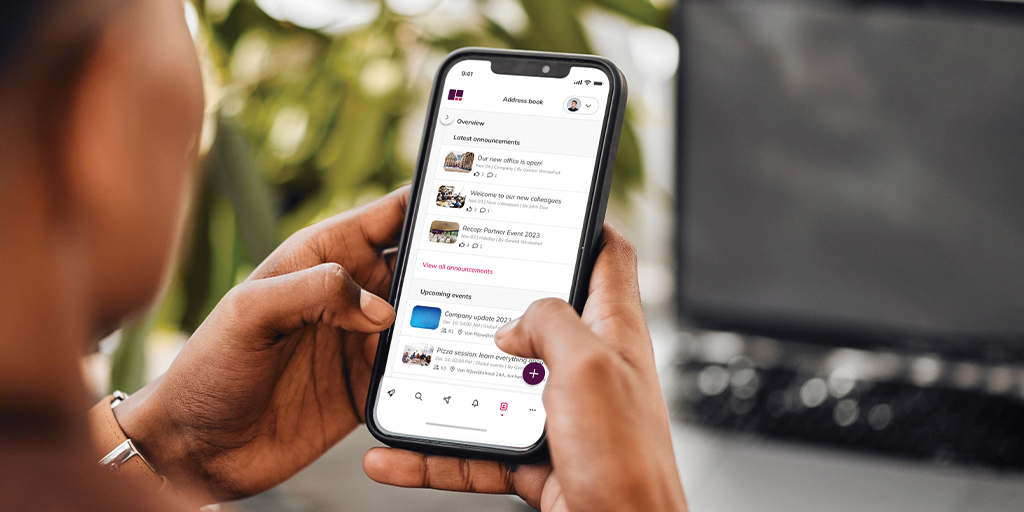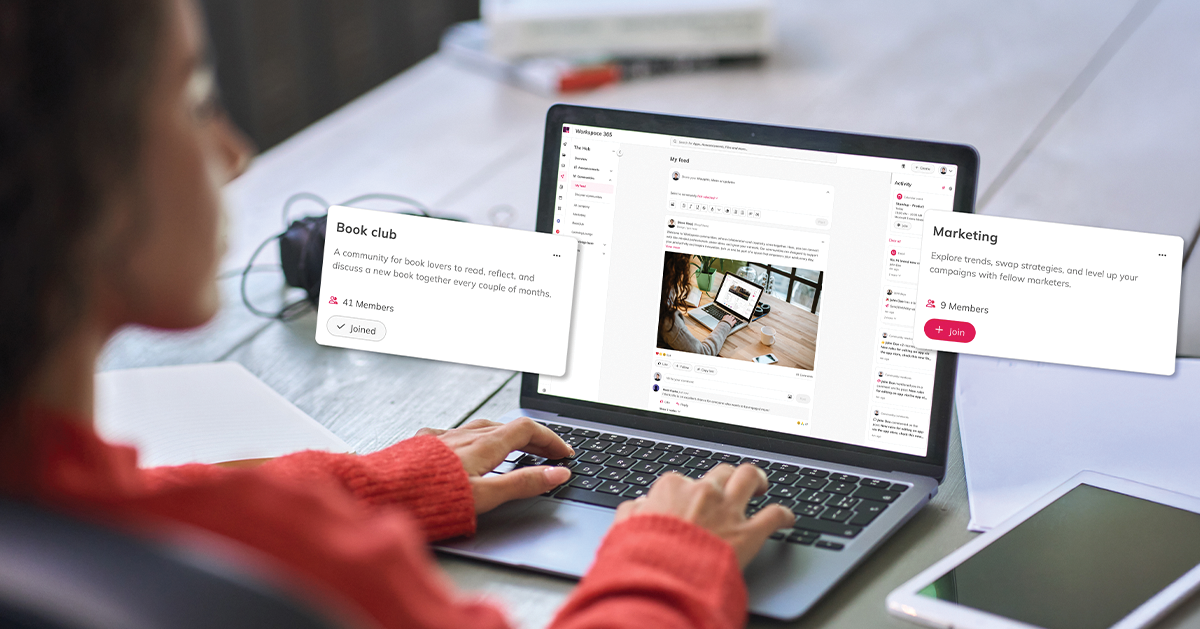Though dozens of articles may try to convince you otherwise, the intranet is not dead. On the contrary: having a modern intranet is now more important than ever. However, it can look different from the traditional static intranet you may be used to. Its role has changed, and the modern intranet itself has evolved with it.
In this article, we'll dive into this role and what your intranet will soon look like - if you're doing it right. And in order to do so, why you may need to change the way your IT and Communications departments collaborate. Let's get to the intranet of the near future!
The intranet: it's alive!
If a caterpillar retreats into its cocoon and emerges a butterfly, it doesn't mean the caterpillar is dead. It's just changed. And with its pretty wings and flying abilities it's safe to say that it's had an upgrade.
From traditional and static, to social intranet
It's the same for the intranet. It hasn't been that static maze of hyperlinks and outdated files anymore for a while. Well, in most cases (and if yours is, you have not been keeping up. You need to be worried more about the state of your intranet).
Over the course of the past decade, the intranet has become more like a social network. It's more collaborative and there's more interaction. It isn't just used for sending information, but for exchanging it as well.
From intranet to digital workspace?
Now the butterfly analogy doesn't really apply here anymore, since the butterfly doesn't go back into a cocoon and emerge, let's say, an amazing dragon. Or at least a big bird. But that is what's happening to the intranet. It's going through its next evolution.
The gap between the intranet and digital workspace is closing, and they're both taking on more and more of each other's traits. It is slowly but surely evolving into a new hybrid form. But why is that? And more importantly: why should you care?
The social intranet is evolving - again
You should care for the same reasons you've traded in your flip-phone for a smartphone: because it's the future. You will simply not be able to keep up with your competitors and customers with your flip-phone technology in a smartphone world.
But besides the fact that you will eventually have to in order for your business to survive, it has a lot of upsides as well. This new hybrid 'intranet' can enable you to get more value out of both your intranet efforts and investments. Which is interesting for IT as well as Communications, and from operational level to management (and even C-Suite) level. I'll tell you why - and how.
Closing gaps between IT and Communications
Company siloes are no longer of this time. Organisations in the more mature stages of digital transformation are flat, with cross-functional teams and free information flows. Which means that teams nowadays should actually know and care about what other teams are doing, because they're all working towards the same major goals.
From me-goals to we-goals: contributing to the bigger picture
That doesn't mean that teams or departments don't have their own goals. It just means that the goals are better aligned and often more holistic and contribute to the goals that are set on an organisational level.
The IT department, for instance, may have goals such as increasing uptime and improving the satisfaction rate of completed support tickets, but now also work more on how to use IT to improve employee productivity and satisfaction.
The same goes for the Communications department. Where traditionally focus was placed on matters such as increasing the exposure of corporate communication efforts, they are also more and more involved in strengthening the company culture, employee engagement and supporting collaboration.
Closing gaps and uniting over overlaps
As you may have noticed, these greater goals departments are focusing on can have quite some overlap. A stronger company culture can for instance substantially contribute to the employee productivity, and vice versa.
This means that IT and Communications are coming closer and closer together, collaborating on achieving the same greater goals. Or at least they should. As the lines between their goals fade, so do the lines between the tools they like to use to achieve them.
Merging the intranet and digital workspace
Which tools are those, you may ask? Oh, the title above gave it away already.
Communications owned the intranet, IT the application portals
Traditionally, the intranet was the responsibility of the Communications department, and the IT department was responsible for the application portal. There may have been some overlap, because after all, the intranet is a technology tool in its core. But overall, both would pretty much operate on their own little islands.
We've unfortunately also seen the little overlap they had before cause an even greater divide, when the IT department decided on all the tools for Communications (because you know, it's technology) and Communications just had to be happy with whatever they got. Safe to say that in many cases, they weren't happy.
But now that the goals of the two are coming closer and closer together, so are the intranet and digital workspace. Or rather: merging.
The intranet and digital workspace: one and the same
It just makes sense, doesn't it? If two things have so much overlap and are so connected to each other, why would you even separate them at all? Why not unite them into one new kind of platform?
One where company announcements are right beside company policies and applications, and where business processes co-exist with collaborative processes, projects and documents.
One with which IT can realise goals such as increased productivity, higher efficiency and significant time-savings with automated processes, and Communications can use to achieve goals such as improved collaboration and internal communication, as well as increasing employee satisfaction and engagement.
And speaking of employees:
Not just for Communications and IT, but organisation-wide
Though I won't go into this in great detail in this article, I do like to mention that in the end, most of what the Communications and IT departments do revolves around the end-user; the employees, the ones who will actually use this new hybrid intranet/workspace. So there should be something in it for them, shouldn't it?
All I will say about it for now is that it indeed most certainly does. Because if it doesn't make sense for these overlapping platforms to be separate for those who manage them, it most definitely does not for those who use it. Uniting the intranet and digital workspace will offer them a simplified working experience with one starting point and one place to go to.
So, what should I do now?
If this article introduces a new perspective on the intranet and digital workspace, or it all does sound familiar but is not reflected in your organisation, you may have some work to do to get your intranet future-proof.
Where to start? That completely depends on where you are now. To determine where exactly this is, you may want to set up your own maturity model for the modern digital workspace. This will help you determine where you are, and how far that is from where you need to be. And when you know this, you can determine the steps it takes to get there.
Intraspace? / Diginet? / Intrawork - Adaptive workspace!
So, what should we call this new intranet/digital workspace hybrid?
Well, I don't know what you call it, but we call it the adaptive workspace. A name we've given Workspace 365 not just because it combines (and lets you customise) all you need from both the digital workspace and the intranet, but also from the old and new IT world (think local, web and hosted). And of course because it adapts to your device, location, browser and more.







